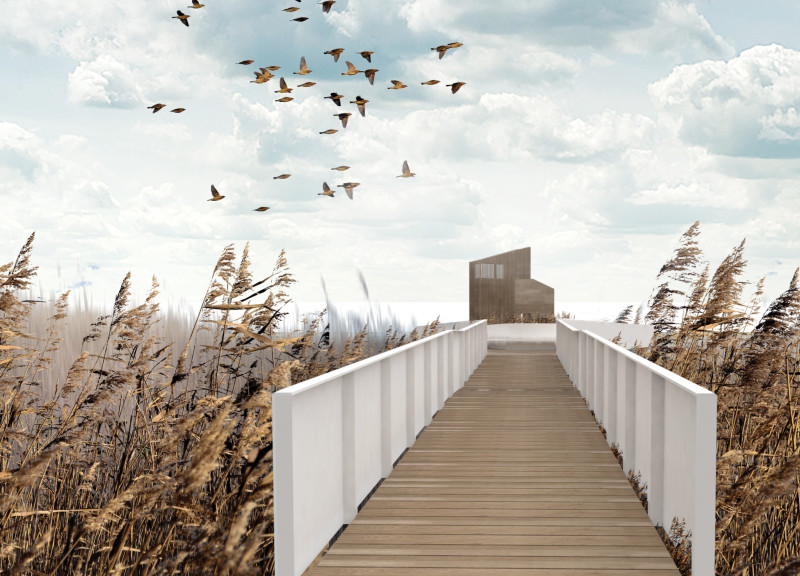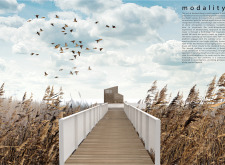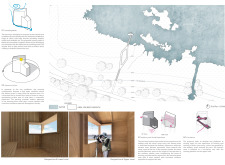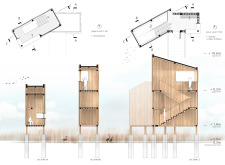5 key facts about this project
### Overview
The birdwatching pavilion is situated on the western edge of Lake Pape in Latvia, an area renowned for its diverse ecosystems and avian species. The design intent focuses on creating an immersive environment that enhances the birdwatching experience while promoting ecological awareness. It embraces the natural landscape and facilitates a deeper connection between visitors and the habitat, serving both educational and observational purposes.
### Spatial Strategy
The pavilion's design features two distinct viewing platforms that offer varied perspectives of the surrounding environment. The lower platform is positioned at eye level with the habitat, allowing for a close-up appreciation of local flora and fauna, while the elevated platform provides panoramic views of the lake and surrounding landscapes. This dual arrangement supports diverse user interactions and encourages both observation and contemplation. Circulation within the space is facilitated by a spiral staircase connecting the two platforms, crafted from wood to maintain continuity with the natural context.
### Materiality and Environmental Integration
The material palette includes wood, glass, and concrete, each chosen for its functional and aesthetic qualities. Wood serves as the primary structural and finishing material, fostering a tactile connection with the surroundings. Glass openings are strategically placed to frame views and allow natural light while minimizing visual barriers. Concrete is utilized for the foundation, elevating the pavilion above the wetland and reducing ecological impact. The overall design emphasizes environmental harmony, employing minimal land alteration techniques and ensuring the preservation of local wildlife.





















































